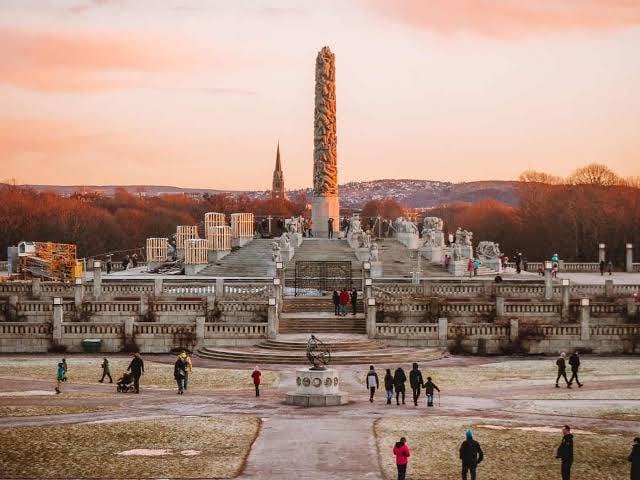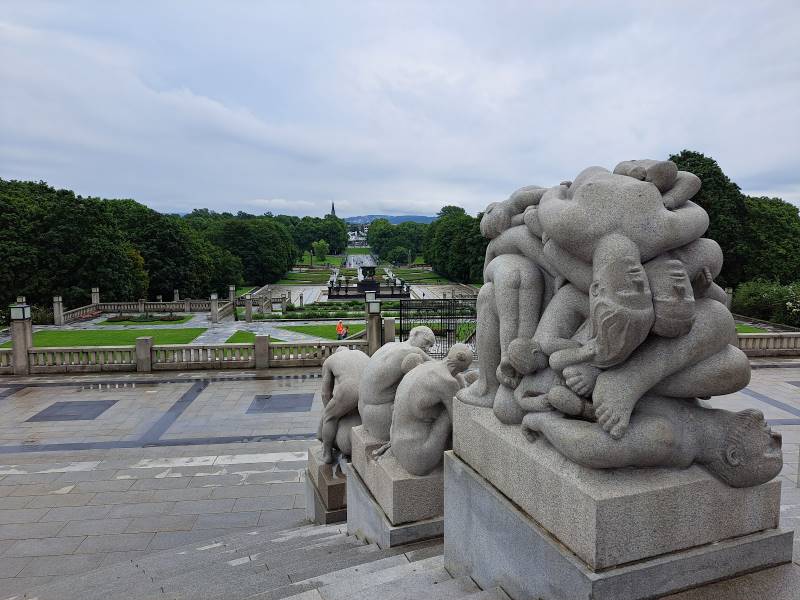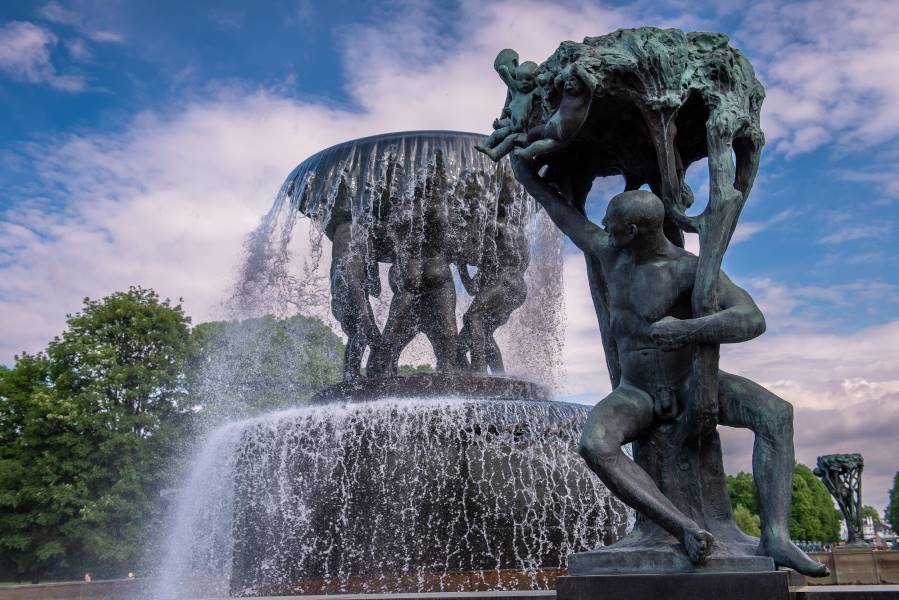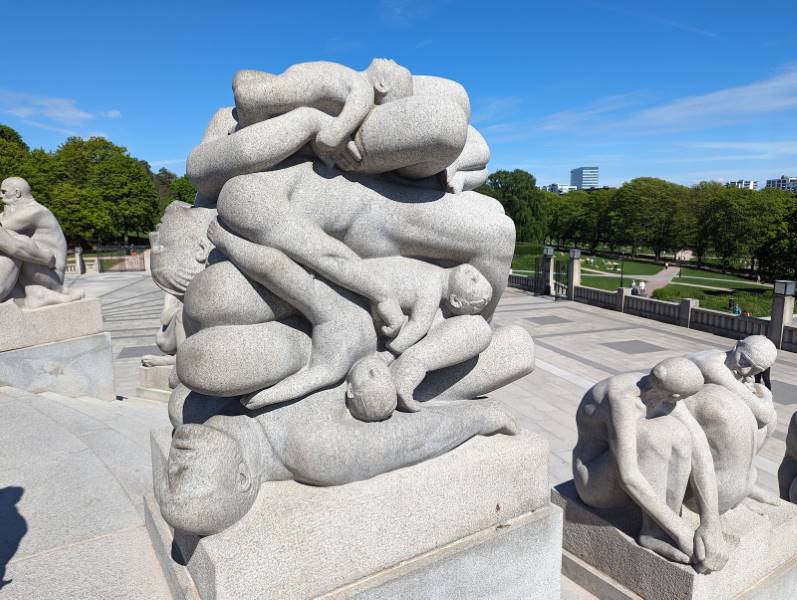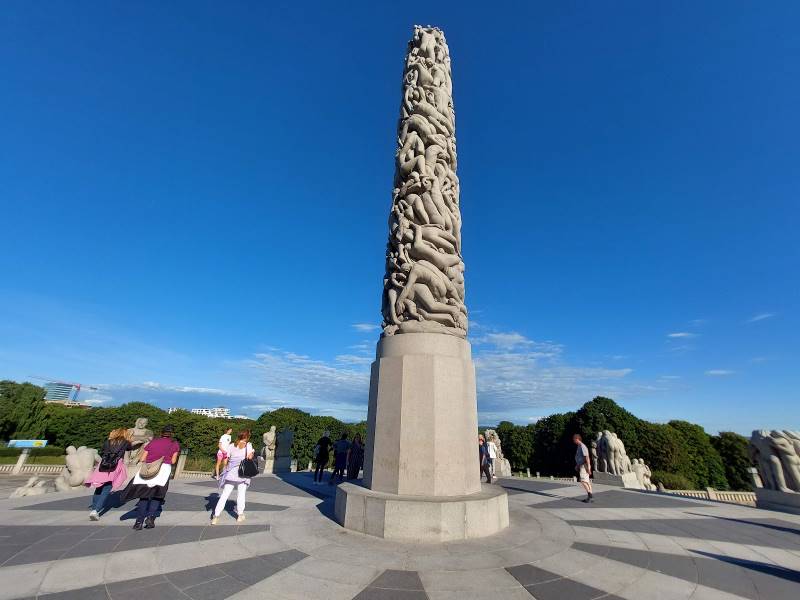- Home
- Where2Go
- Places
- Oslo
- Places to visit in Oslo
- Vigeland Sculpture Park
Vigeland Sculpture Park
OsloMarvel at Unique Sculptures
Overview
Vigeland Sculpture Park, located in Oslo, is a stunning outdoor exhibition showcasing the works of renowned Norwegian sculptor Gustav Vigeland.
Suggested Duration - 2-3 hours
What To Expect?
Visitors can explore over 200 bronze, granite, and wrought iron sculptures, each depicting various aspects of human life and emotion. The park also features beautiful gardens and pathways, perfect for a leisurely stroll.
Tips
- Visit during daylight hours for the best experience.
- Wear comfortable shoes for walking.
- Don't forget your camera for capturing memorable moments.
Vigeland Sculpture Park Overview
Vigeland Sculpture Park, located in Oslo, Norway, is the world's largest sculpture park created by a single artist, Gustav Vigeland. This iconic park features over 200 bronze, granite, and wrought iron sculptures, all designed by Vigeland himself. The park is a part of Frogner Park and is one of Oslo's most popular tourist attractions, offering a unique blend of art and nature. Visitors can explore the park's beautifully landscaped gardens and marvel at the intricate sculptures that depict the human experience in various forms.
The Vigeland Sculpture Park is seated in Oslo, the capital city of Norway. A colossal structure park, it was created by Gustav Vigeland.
| Key Features of Vigeland Sculpture Park | • Over 200 sculptures by Gustav Vigeland • The Monolith, a 14-metre high sculpture with 121 human figures • The Wheel of Life, symbolising eternity • The Fountain, surrounded by 20 tree group sculptures • The Bridge, featuring 58 bronze sculptures |
|---|---|
| Timings | Open daily, 24 hours a day |
| Entry Fee | Free entry |
| Tips | • Plan to spend at least 2-3 hours to fully explore the park. • Visit early in the morning or late in the afternoon to avoid crowds. • Wear comfortable walking shoes as the park is extensive. • Bring a camera to capture the stunning sculptures and landscapes. • Pack a picnic to enjoy in the scenic surroundings. |
| Require Time | 2 to 3 hours |
| Restricted Items | • Large bags and backpacks (locker storage available) • Pets (except service animals) |
More About Vigeland Sculpture Park
Vigeland Sculpture Park is a testament to the artistic genius of Gustav Vigeland, who not only created the sculptures but also designed the layout of the park. The sculptures are arranged in five main sections: The Main Gate, The Bridge, The Fountain, The Monolith Plateau, and The Wheel of Life. Each section represents different stages of human life, from birth to death, and explores themes of relationships, emotions, and the human condition.
Architecture of Vigeland Sculpture Park
The park's layout is meticulously planned, with wide pathways, lush lawns, and strategically placed sculptures that guide visitors through Vigeland's artistic vision. The Monolith Plateau, the park's central feature, is a striking granite column surrounded by 36 figure groups, symbolising the cycle of life. The Fountain, another highlight, features six giants holding a large basin, with water cascading down to a series of smaller basins below.
Best Time to Visit Vigeland Sculpture Park
The park can be visited year-round, but the best time to visit is during the spring and summer months (May to September) when the weather is pleasant, and the gardens are in full bloom. Early mornings and late afternoons are ideal for a peaceful visit with fewer crowds.
How to Reach Vigeland Sculpture Park
- By Tram:Take tram line 12 to the Vigelandsparken stop, which is a short walk from the park.
- By Bus:Bus lines 20 and 28 stop at the Vigelandsparken stop.
- By Metro:Take the metro to Majorstuen station, and from there, it's a 15-minute walk to the park.
- By Bike:Oslo is a bike-friendly city, and there are bike racks available near the park entrances.
- On Foot:The park is within walking distance from many central locations in Oslo.
Nearby Tourist Spots
While visiting Vigeland Sculpture Park, you can explore several other notable attractions nearby. The Frogner Manor, located within Frogner Park, offers a glimpse into Oslo's history and architecture. The Oslo City Museum, also situated in Frogner Park, provides insights into the city's cultural heritage. The nearby Aker Brygge, a popular waterfront area, is perfect for dining, shopping, and enjoying the scenic views of the Oslofjord.
FAQs - Frequently Asked Questions about Vigeland Sculpture Park
How do you plan for the perfect trip to any destination?
How to choose a destination to travel to?
How to explore a place by yourself?
Destinations close to Vigeland Sculpture Park
Visual Stories
More Things to Do Near Vigeland Sculpture Park
Explore More
Top Countries to Explore
Top States in India
Best Places To Visit In Months
Places to Visit in Countries from India
Places to Visit in States in India
Best International Places to Visit in 2025
Top banner images
powered by Google
